Threats to Coral Reefs
Identifying and Addressing Threats to Reef Communities
SCROLL TO LEARN MORE
What We Mean by "Threats"
Coral reefs face a variety of anthropogenic and environmental stressors from warming ocean temperatures and bleaching events to disease brought on by climate change and increased human activity, leading to degradation, loss of biodiversity, and a decline of the ecosystem benefits that reefs provide.
Before we can provide feasible and realistic solutions, we must first identify and address those stressors that most immediately impact coral reef communities from warming sea surface temperatures and bleaching events to disease. This page serves as a tool to keep you updated and informed regarding current threats to these natural ecosystems.
Click the icons below to explore the different stressors:
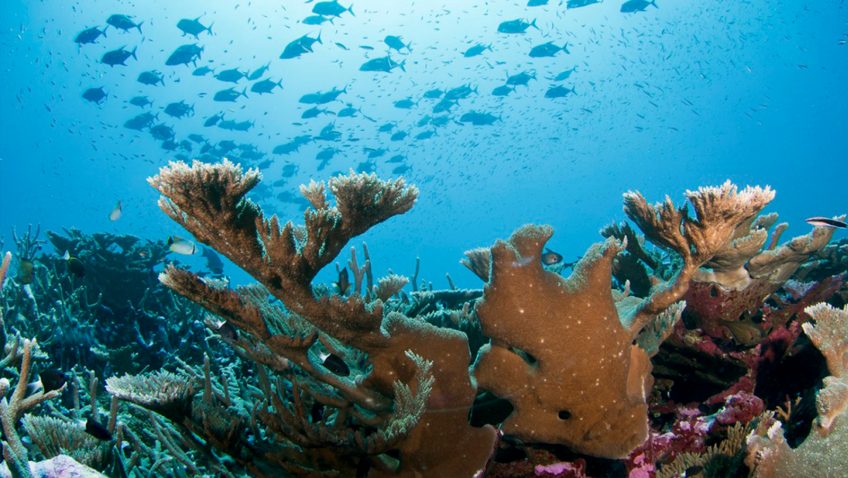
Elkhorn Coral (Acropora palmata) is an essential reef-building coral throughout the Caribbean, and it is currently critically endangered (IUCN Status) due to ocean warming.
Coral Bleaching
Coral bleaching occurs when corals become physically stressed due to extreme changes in temperature, light or nutrient concentrations in their surrounding habitat, and they expel the photosynthetic algae found within their tissue, turning them a pale white and leaving them vulnerable to mortality. However, bleaching does not mean the corals immediately die, and they can recover from a bleaching event.
Click the photo to learn more.
This photosynthetic algae is both the major source of food for corals (producing organic carbohydrates that the coral needs to survive) and gives the coral its vibrant coloration, thus explaining why they turn a pale white when the algae is expelled. When bleaching occurs, corals cannot play host to their photosynthetic algae again until the physical stress (high sea surface temperatures, reduced light penetration of the marine ecosystem, etc.) is reduced, and the longer the physical stress persists, the more likely corals are to undergo mortality.
To see what bleaching looks like, click here.
In 2024, NOAA confirmed the world is experiencing the fourth global coral bleaching event on record – and the second in the last 10 years.
In late July 2023, our team returned to the key climate monitoring site in the Florida Keys known as Cheeca Rocks, an inshore shallow reef off the coast of Islamorada. While this reef has proven resilient to stressful conditions and high sea surface temperatures over the years, scientists at AOML found Cheeca completely bleached as a marine heatwave persisted for months.
Coral Bleaching Frequently Asked Questions (FAQ)
When corals are stressed by changes in conditions, such as extreme temperatures or reduced light penetration, they may expel the symbiotic algae living in their tissues, causing them to turn completely white in a process known as bleaching. Without the algae, they lose their major source of food and can become weak, potentially leading to death. However, if the conditions return to within optimal range for the corals (i.e. sea surface temperatures returning to average range and fluctuation), then the coral can become a host again to the symbiotic algae and recover from the bleaching event.
To learn more about coral bleaching: https://oceanservice.noaa.gov/facts/coral_bleach.html
Sea surface temperature (SST) is a measurement of the water temperature at and near the surface, though a specific depth varies by definition. Sea surface temperature is an essential measurement as the temperature right where the ocean is in direct contact with the atmosphere plays a significant role in weather and storm development, global climate trends and drastically influences crucial marine ecosystems. Where sea surface temperatures are high, relatively large amounts of heat energy and moisture enter the atmosphere, potentially leading to development of storms. In the Atlantic, high sea surface temperatures can lead to rapid intensification of tropical storms and hurricanes while bringing significant heat stress to marine ecosystems.
When a coral bleaches, it is not dead. Corals can survive a bleaching event if waters cool down and other sources of nutrition are available, but they are under more stress and ultimately susceptible to mortality. The rise in marine heatwaves can cause an unprecedented increase in coral mortality within coral reefs and damage ecosystem services. However, with the help of marine heat wave forecasting, we can anticipate the temperature rises and monitor coral reefs to learn more about their threats and how we can help support marine ecosystems.
To learn more about the marine heat wave forecast: https://psl.noaa.gov/marine-heatwaves/
Identifying a specific temperature at which corals begin to bleach is complex as it varies by species, region, the microbial life that exists within the coral’s tissue and how long the coral sits in the warm water, among other factors. At AOML, we are actively investigating the thresholds at which specific – and essential – reef-building coral species begin bleaching due to heat stress with ongoing projects in our Experimental Reef Lab (ERL). However, the “bleaching threshold” for coral reefs identified by NOAA’s Coral Reef Watch is usually when water temperatures are at least 1°C (1.8°F) above the maximum summertime mean (MMM) at a given reef location.
In 2024, we first observed above average temperatures leading to a “Bleaching Watch” taking effect at Cheeca Rocks, the climate monitoring site and inshore, shallow reef off of Islamorada in the Florida Keys, when sea surface temperatures rose to about 29 degrees Fahrenheit in May. In 2023, when a significant marine heatwave event led to mass coral bleaching in the Caribbean, a “Bleaching Watch” went into effect in early June.

To learn more about the “Bleaching Threshold Temperature:” Bleaching Threshold
To monitor Coral Bleaching warnings in the Florida Keys and South Florida: NOAA Coral Reef Watch
For corals, the temperature is important but so is the amount of time that corals are stressed by the heat. The longer this stress persists, the more likely corals are to bleach. Bleaching does not always lead to death. But, again, if there is no relief from the heat, then corals don’t have time to recover from the stress, and they will eventually die. Corals are food and habitat for other marine organisms and if the corals die, this has a cascading effect on all the other life supported by the reef.
While coral reefs have gradually recovered from the event with cooling sea surface temperatures, significant mortality has been observed among some species (primarily soft corals) at identified sites such as Cheeca Rocks.
AOML’s Coral Program is at the forefront of monitoring these crucial reefs and investigating through rigorous experimentation how coral resilience can be enhanced in the face of extreme heat, disease, hypoxia, ocean acidification and a variety of other stressors. Our Experimental Reef Lab allows us to expose essential reef-building coral species to these stressors and identify thresholds at which specific species cannot tolerate these conditions – while aiming to push the boundaries on what they can tolerate.
With NOAA’s ‘Omics program, we are also investigating how specific genotypes influence coral resilience to heat stress, identifying the molecular underpinnings that can aid in enhancing tolerance to stressful conditions.
Video: Experimental Reef Lab with Ian Enochs
To learn more about the experiments we’re running: FRESCA – NOAA/AOML
To learn more about our research investigating coral resilience to heat stress on the molecular level: OMICS – NOAA/AOML
One of the exciting things we can do to make corals “tough” in preparation for warmer sea surface temperatures, especially in the summer months, is expose coral fragments in a controlled laboratory setting to higher temperatures. In the Experimental Reef Lab, we do this by turning the temperature up really high, then immediately cooling it down to give our coral a break from the heat. By doing this multiple times a day, every day, we can “toughen up” specific coral species in a way similar to going to the gym and working out really hard, then going home to recover. You do that every day and it tends to make us stronger, more capable of dealing with stress.
Video: Experimental Reef Lab with Ian Enochs
For more information on the Experimental Reef Lab: Experimental Reef Lab – NOAA/AOML
The experiments we are running: FRESCA – NOAA/AOML
Yes. We have produced corals that last longer under temperature stress in a laboratory setting, and in the future we may be able to expand on this to make reef-building corals last longer under temperature stress. We also know that we can grow corals rapidly in the lab and get them to reproduce. In our lab, we are developing scalable robotic techniques for growing and maintaining coral. All of these approaches represent potential solutions, or steps in a plan to implement climate resilient restoration. However, the great challenge now is expanding these techniques on the scale needed to address something that is actively impacting coral reefs across South Florida, the Gulf of America, the greater Caribbean region – and ultimately the world.
It is possible for corals to become more resilient to heat stress after natural events and it’s something we’ve seen before. A study led by scientists at AOML demonstrated that corals in the eastern tropical Pacific highly exposed to the 1982-83 El Niño event and associated heat wave were highly susceptible to heat stress and experienced high mortality rates but more resistant to heat stress with lower mortality in the following 1997-98 and 2015-16 heat waves. We have also seen Cheeca Rocks in the Florida Keys, repeatedly bounce back or persist despite tremendous amounts of thermal stress and disease. It certainly is the exception to the rule.
This demonstrates that coral reefs can become more resilient to stressful conditions expected under climate change. Now the challenge is enhancing that resilience on a massive (global) scale and quickly. This is where our team’s efforts to scale up ongoing research in a relatively short period of time becomes essential.
It is possible for corals to become more resilient to heat stress after natural events and it’s something we’ve seen before. A study led by scientists at AOML demonstrated that corals in the eastern tropical Pacific highly exposed to the 1982-83 El Niño event and associated heat wave were highly susceptible to heat stress and experienced high mortality rates but more resistant to heat stress with lower mortality in the following 1997-98 and 2015-16 heat waves. We have also seen Cheeca Rocks in the Florida Keys, repeatedly bounce back or persist despite tremendous amounts of thermal stress and disease. It certainly is the exception to the rule.
This demonstrates that coral reefs can become more resilient to stressful conditions expected under climate change. Now the challenge is enhancing that resilience on a massive (global) scale and quickly. This is where our team’s efforts to scale up ongoing research in a relatively short period of time becomes essential.
One of the exciting things we can do to make corals “tough” in preparation for warmer sea surface temperatures, especially in the summer months, is expose coral fragments in a controlled laboratory setting to higher temperatures. In the Experimental Reef Lab, we do this by turning the temperature up really high, then immediately cooling it down to give our coral a break from the heat. By doing this multiple times a day, every day, we can “toughen up” specific coral species in a way similar to going to the gym and working out really hard, then going home to recover. You do that every day and it tends to make us stronger, more capable of dealing with stress.
Video: Experimental Reef Lab with Ian Enochs
For more information on the Experimental Reef Lab: Experimental Reef Lab – NOAA/AOML
The experiments we are running: FRESCA – NOAA/AOML
Marine Heat Waves
A marine heat wave is when the ocean temperature (i.e. sea surface temperature, SST) is extremely warm relative to what is typically considered “normal,” or warmer than 90% of the previous observations for a given time of year for at least 5 days – but some can last for weeks, months or years. The longer a marine heatwave lasts, the greater the impacts to marine ecosystems. The prolonged marine heatwave of 2023 in the Atlantic Ocean, the Gulf region and Caribbean Sea led to a severe bleaching event affecting coral reefs across the region. A marine heatwave in the Pacific known as “the Blob” lasted from 2013 to 2016, leading to an ecological cascade and devastating fisheries collapse.
Scientists at NOAA’s Physical Science Laboratory (PSL) and Coral Reef Watch actively monitor for marine heatwave conditions globally using blended satellite data and real-time ocean observations collected by 1,300 weather observation stations deployed by the NOAA National Weather Service’s National Data Buoy Center.
Marine heatwaves are anomalous warming events above the 90th percentile. In a practical sense, it means that they happen 10% of the time relative to long-term records, typically 30-year averages. Globally, they occur from 0 to 5 times per year, ranging from 5 to 40 days.
However, these events have increased in frequency across the globe in recent years, which is expected to continue through the 21st century as global average temperatures rise, significantly impacting essential marine ecosystems, fisheries and coastal communities.
Sea surface temperature (SST) is a measurement of the water temperature at and near the surface, usually defined as the top few millimeters of the ocean. Sea surface temperature is an essential measurement as the temperature right where the ocean is in direct contact with the atmosphere plays a significant role in weather and storm development, global climate trends and drastically influences crucial marine ecosystems.
Where sea surface temperatures are high, relatively large amounts of heat energy and moisture enter the atmosphere, potentially leading to development of storms. In the Atlantic, high sea surface temperatures can lead to rapid intensification of tropical storms and hurricanes while bringing significant heat stress to marine ecosystems.
Due to long term warming trends in the Earth’s oceans, marine heatwave conditions have become more frequent globally since 1991 – a trend that will likely continue under a changing climate. Marine heatwave events are expected to increase not only with their frequency and amplitude/intensity but their duration as well. A few studies even hinted at a near-permanent marine heat wave state in some areas by the end of 21st. NOAA’s Physical Sciences Laboratory (PSL) provides monthly reports assessing the probability and likelihood of potential Marine Heatwave events globally and with each region with an interactive map.
To see the latest global Marine Heatwave forecasts: Marine Heatwaves : NOAA Physical Sciences Laboratory
To see the daily Marine Heatwave Watch satellite monitoring performed by NOAA’s Coral Reef Watch: https://coralreefwatch.noaa.gov/product/marine_heatwave/
To see daily sea surface temperature satellite observations performed by NOAA’s Coral Reef Watch: NOAA Coral Reef Watch Daily 5km Satellite Coral Bleaching Heat Stress SST Product (Version 3.1)
As a branch of the NOAA National Weather Service (NSW), the National Data Buoy Center collects real-time quality-controlled marine observations including sea surface temperature using its 1,300 weather observation stations. However, to examine and forecast events such as marine heatwaves and coral bleaching on a global scale, data collected from these stations are blended with satellite observations of daily sea surface temperature (SST).
Both NOAA’s Physical Science Laboratory (PSL) and Coral Reef Watch monitor Marine Heatwave conditions globally. Here at the NOAA Atlantic Oceanographic and Meteorological Laboratory (AOML), our scientists constantly collaborate and assess measurements provided by these resources to identify when marine heatwave conditions are likely in the Gulf of America and the greater Caribbean, potentially leading to a coral bleaching event.
We monitor ocean surface temperatures from space and can see extremes develop in real time. Several factors may cause MHWs in the ocean, and these mechanisms influence the timescales of the predictions of these events. However, the first sign of a marine heatwave is when ocean surface temperatures exceed 90% of typical regional temperatures for a sustained period of time, usually at least five days. Scientists compare current temperatures to a baseline average from 1991 to 2020, taking into account seasonal fluctuations and global warming trends.
Every marine heatwave is significant, by definition. Ocean temperatures in the Summer of 2023 (the most recent marine heatwave) were extremely warm relative to what we typically consider to be “normal”. Among historical marine heatwave conditions, the event of Summer 2023 was on the upper end of “average.”
Prior to 2023, the last time there was a marine heatwave of the same magnitude that encompassed this much of the Gulf of America was in 2020.
To learn more about the impacts of the 2023 Marine Heatwave on coral reefs: Cheeca Rocks Reef Completely Bleached – NOAA/AOML.
To learn more about the 2023 Marine Heatwave: The ongoing marine heat waves in U.S. waters, explained | National Oceanic and Atmospheric Administration
To learn more: What a Marine Heatwave Means for South Florida – NOAA/AOML
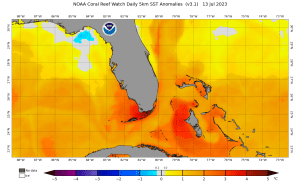
Water temperatures throughout the Gulf of America and in the Caribbean Sea were anywhere from 1-2.5˚C (~2-4.5˚F) warmer than normal in July and early August of 2023. Temperature anomalies like this aren’t unprecedented, but they are concerning while in the thick of the Atlantic hurricane season (June – November) with the tropical North Atlantic already warm.
Developing storms that pass into the region during a marine heatwave or with above average sea surface temperatures can be fueled by the warm waters as a result. Additionally, over time it will impact the different species of animals that call the ocean home.
To learn more: What a Marine Heatwave Means for South Florida – NOAA/AOML
The 2023 marine heatwave persisted across the Gulf of America and the Caribbean from November or December of 2022 to roughly November 2023.
In August 2023 when scientists at AOML found Cheeca Rocks completely bleached, our experimental marine heatwave forecasts indicated a 70-80% chance that extreme ocean temperatures would persist in the southern Gulf of America and Caribbean through October 2023.
There were more isolated marine heatwave conditions off the Northeast US coast, along the Gulf Stream. We also observed a large marine heatwave in the Northeast Pacific (in the Gulf of Alaska) that was sitting offshore for months before the events along the East coast heightened in early August.
Exposure to extreme temperature for long periods of time causes a breakdown in the beneficial relationship between coral and the algae that lives inside of them and provides them food. The coral is left pale or white, i.e., bleached. The lack of food from the algae can lead to the death of the coral, subsequent erosion of the habitat, and ultimately a dramatic loss of the ecosystem services that we rely on including fishing and food, storm protection, tourism, and biodiversity.
In 2023, we saw instances of coral bleaching in the Miami area. Severe bleaching and significant mortality is likely when the marine heatwave persists.
For corals, the temperature is important but so is the amount of time that corals are stressed by the heat. The longer this stress persists, the more likely corals are to bleach. Bleaching does not always lead to death. But, again, if there is no relief from the heat, then corals don’t have time to recover from the stress, and they will eventually die. Corals are food and habitat for other marine organisms and if the corals die, this has a cascading effect on all the other life supported by the reef.
Ocean Heat content is the total amount of heat stored globally in the ocean. Excess heat in the atmosphere – largely attributed to greenhouse gas emissions – is taken up by the oceans globally.
Yes, due to a changing climate ocean heat content has increased significantly since the 1990’s. While upper layers of the ocean more exposed to the atmosphere are accumulating heat faster than the deeper layers, it is estimated that ocean heat content globally is rising.
When corals are stressed by changes in conditions, such as extreme temperatures or reduced light penetration, they may expel the symbiotic algae living in their tissues, causing them to turn completely white in a process known as bleaching. Without the algae, they lose their major source of food and can become weak, potentially leading to death. However, if the conditions return to within optimal range for the corals (i.e. sea surface temperatures returning to average range), then the coral can become host again to the symbiotic algae and recover from the bleaching event.
To learn more about coral bleaching: https://oceanservice.noaa.gov/facts/coral_bleach.html
When a coral bleaches, it is not dead. Corals can survive a bleaching event if waters cool down and other sources of nutrition are available, but they are under more stress and ultimately susceptible to mortality. The rise in marine heatwaves can cause an unprecedented increase in coral mortality within coral reefs and damage ecosystem services. However, with the help of marine heat wave forecasting, we can anticipate the temperature rises and monitor coral reefs to learn more about their threats and how we can help support marine ecosystems.
To learn more about the marine heat wave forecast: https://psl.noaa.gov/marine-heatwaves/
Ocean Acidification
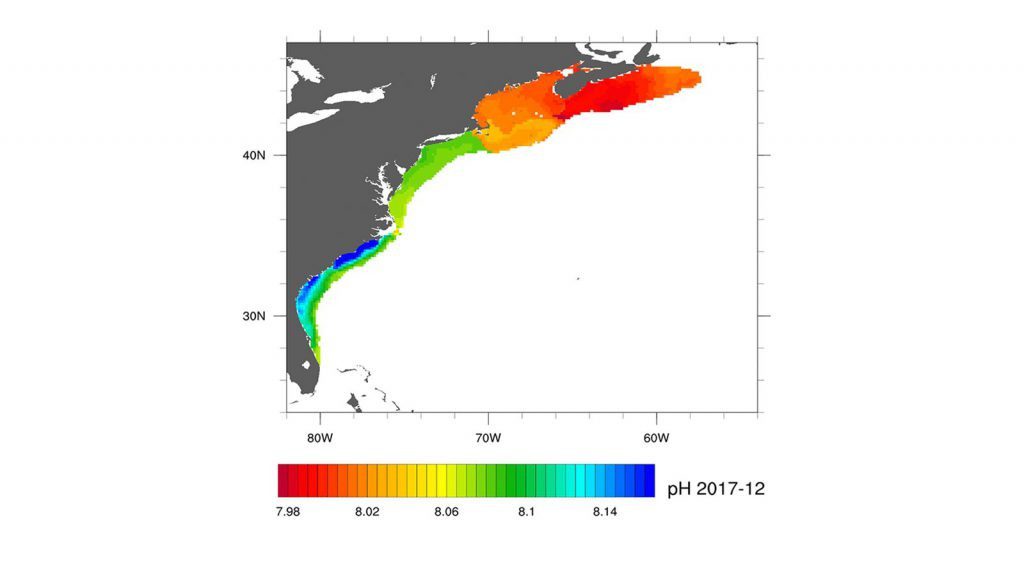
Map of the US East Coast showing Ocean Acidification. Red indicates more acidic, green indicates relatively neutral.
As oceans warm, they are able to take up and store greater concentrations of carbon dioxide (CO2) that has serious negative effect on reef ecosystems and other marine environments globally: Ocean Acidification (OA). Following the chemistry, an increase in CO2 taken up by the ocean leads to an increase in hydrogen ions (H+) in the ocean through a series of chemical reactions, making the oceans more acidic. This increase in hydrogen ions threatens coral reefs as they bind with carbonate, an essential molecule corals require to build their hard internal skeleton (composed of Calcium Carbonate, CaCO3). With less available carbonate ions, corals and other organisms including oysters and shellfish are unable to maintain and build up the hard structures they need to live.
The effects of ocean acidification on coral reefs are thus amplified by increased emissions of carbon into the atmosphere. Identifying how corals persist in response to this environmental stressor is crucial to understanding the future of coral reef ecosystems. AOML scientists continue to advance research including a new monitoring framework that will aid resiliency and restoration efforts.

Coral Diseases
Corals are highly susceptible to a variety of diseases that have increased in frequency over the last few decades. White band disease mainly threatens Acropora cervicornis (Staghorn) and Acropora palmata (Elkhorn), both ESA-listed species that are key to restoration efforts across Florida and the Caribbean. Of growing concern is the fast-spreading Stony Coral Tissue Loss Disease (SCTLD) that was first observed on Virginia Key in 2014 and has expanded across the Caribbean.
Caption: A large brain coral with white lesions caused by Stony Coral Tissue Loss Disease.
Click the photo to learn more.
Corals are highly susceptible to a variety of diseases that have increased in frequency over the last few decades. White band disease mainly threatens Acropora cervicornis (Staghorn) and Acropora palmata (Elkhorn), both ESA-listed species that are key to restoration efforts across Florida and the Caribbean. Of growing concern is the fast-spreading Stony Coral Tissue Loss Disease (SCTLD) that was first observed on Virginia Key in 2014 and has expanded across the Caribbean.
To see what bleaching looks like, click here.
Black-band disease on a pale coral colony of Montastraea cavernosa in the Florida Keys. Warming oceans and bleaching can increase a coral’s susceptibility to disease. Credit: NOAA
Dredging and Sedimentation
Digging up of debris and resuspension of sediment from the bottom of marine environments during dredging operations is a key stressor to corals. Dredging is typically performed to widen or deepen navigation channels in bodies of water used for shipping and recreational boating. As vessels increase in size to carry greater loads, channels must be made deeper and wider.
However, research performed by scientists at AOML is demonstrating that dredging and sedimentation impacts corals at all life stages – including the early stages.
How does this impact corals?
If not done carefully, dredging can stir up sediment and increase turbidity that attenuates the amount of light needed by photosynthetic symbionts living in the soft tissue of corals. Furthermore, high sedimentation rates can lead to coral mortality by burying colonies and decreasing the ability of coral larvae to settle and survive in the area impacted. When marine sediment becomes resuspended, it may also carry pathogenic bacteria that can trigger coral disease outbreaks.
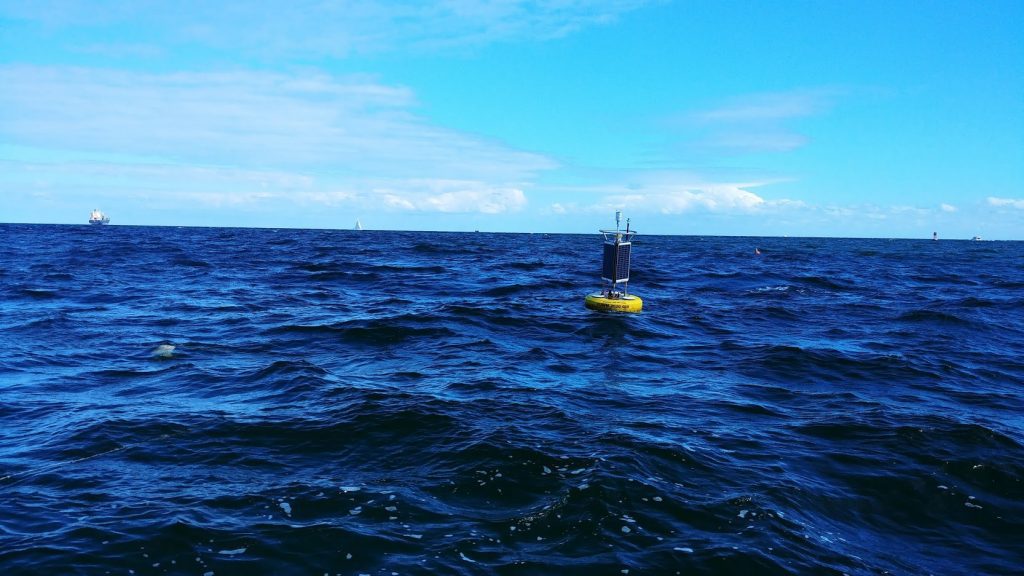
What are we doing?
AOML Scientists are working in partnership with the Army Corps of Engineers (ACE) to develop the ‘Environmental Information Synthesizer for Expert Systems’ (EISES), a state-of-the-art water quality and turbidity monitoring system that will inform management of dredging activities in Port Everglades of Ft Lauderdale in Florida. The goal is to mitigate the effects of dredging on benthic ecosystems when expansion of the Port Everglades begins in 2027. Current testing and data collection prior to the onset of dredging operations is essential to establish baseline conditions of turbidity, water quality and other environmental parameters in the surrounding area to distinguish between disturbances caused by natural processes (e.g. high winds and strong current) and what is caused by dredging.
Additional Bleaching Media Resources
Bleaching Observations
(January 2023 – July 2023)
Below you will find examples of bleaching on experimentally outplanted corals at long-term monitoring and research sites by scientists with the AOML Coral Program, University of Miami, and the Cooperative Institute for Marine & Atmospheric Studies due to the marine heatwave of 2023.
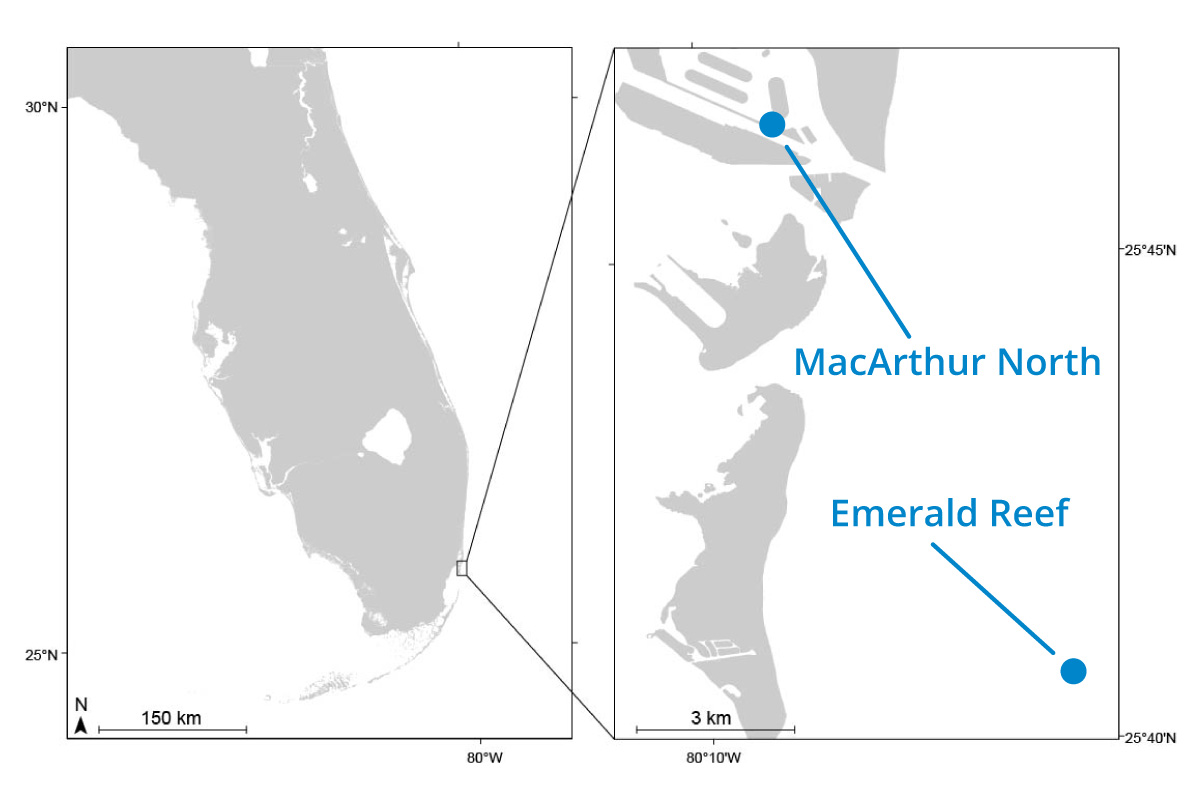
MacArthur North
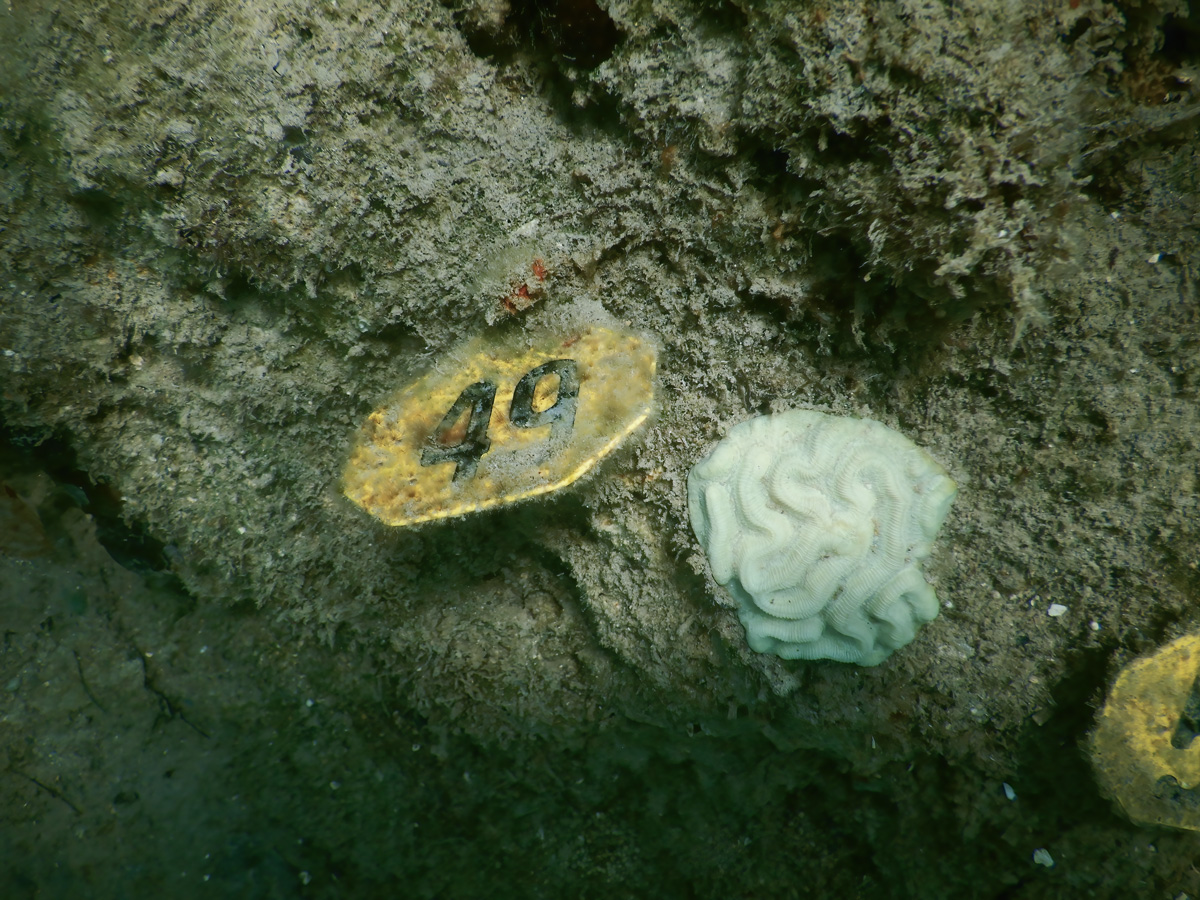 July 11, 2023
July 11, 2023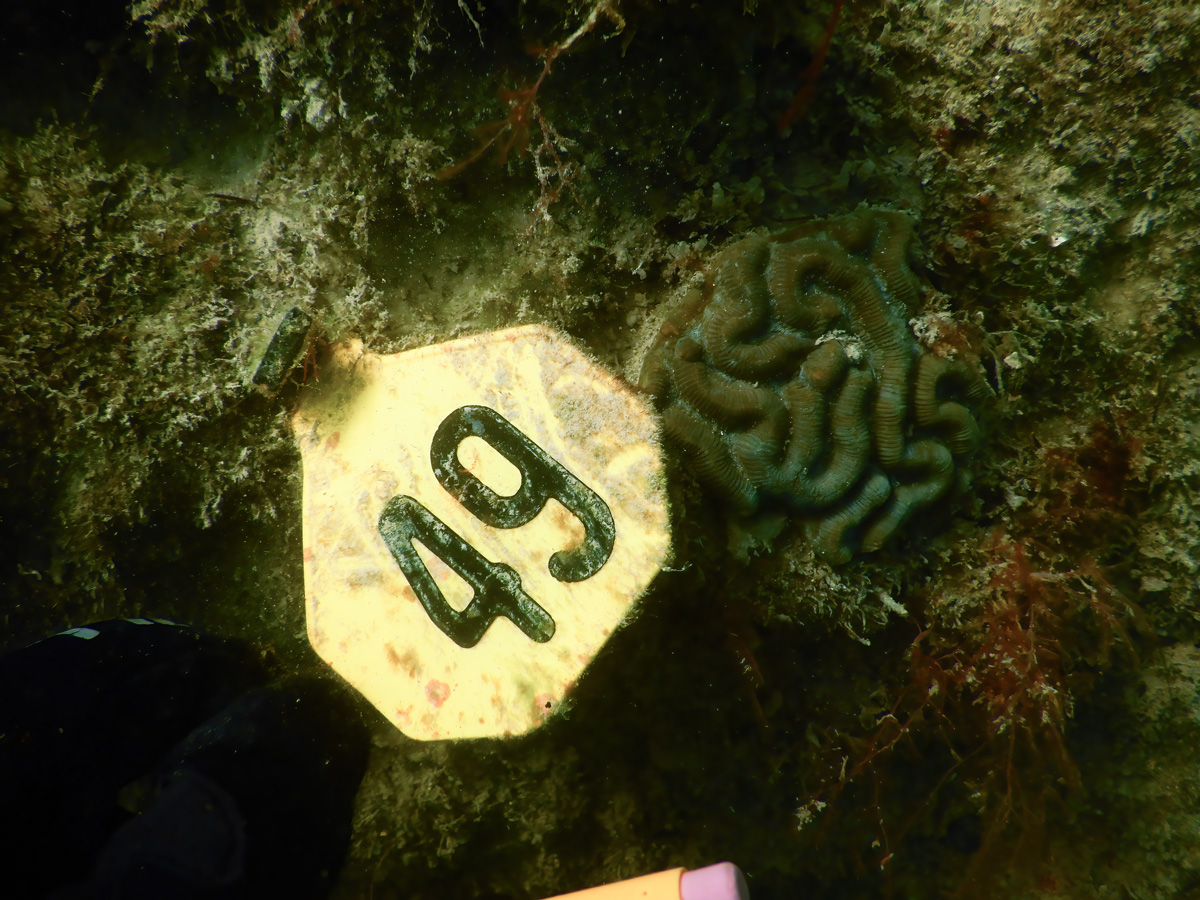 January 26, 2023
January 26, 2023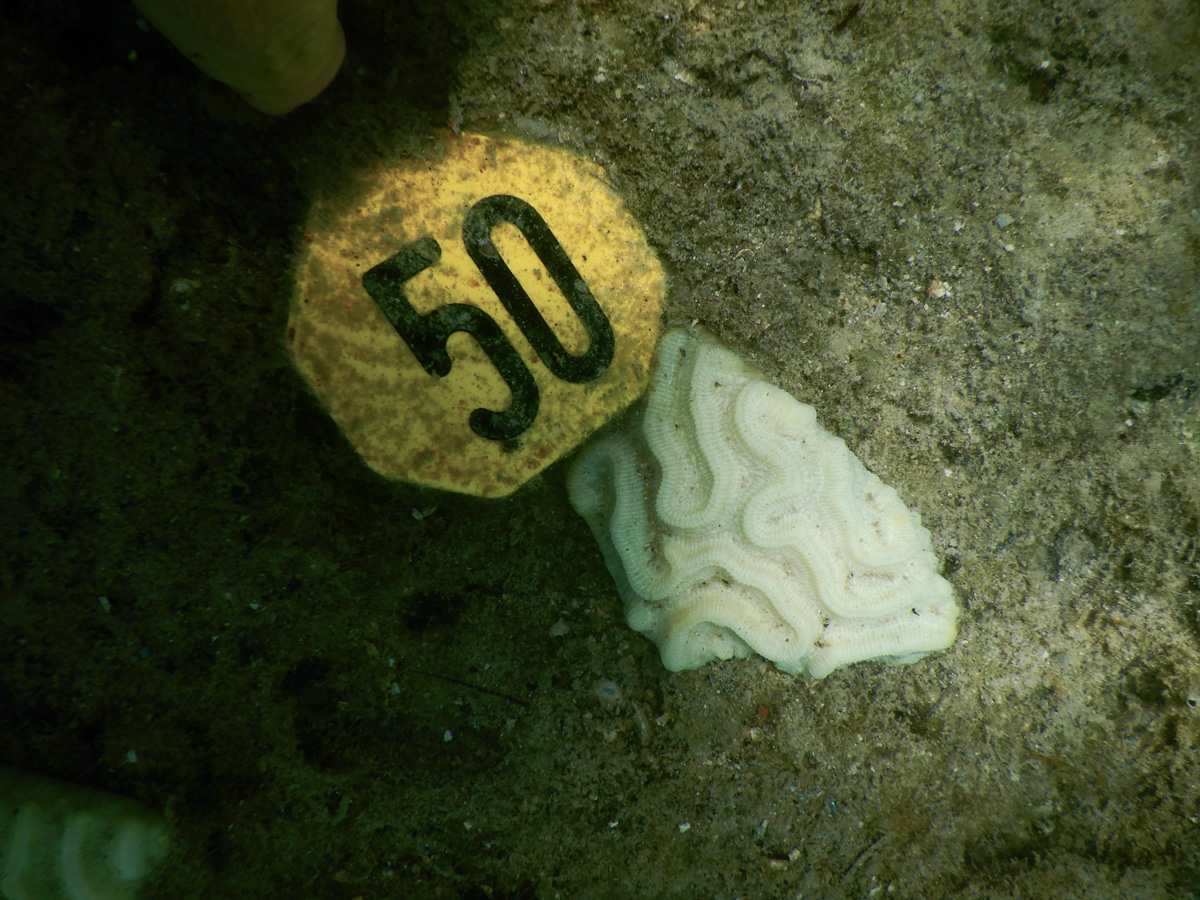 July 11, 2023
July 11, 2023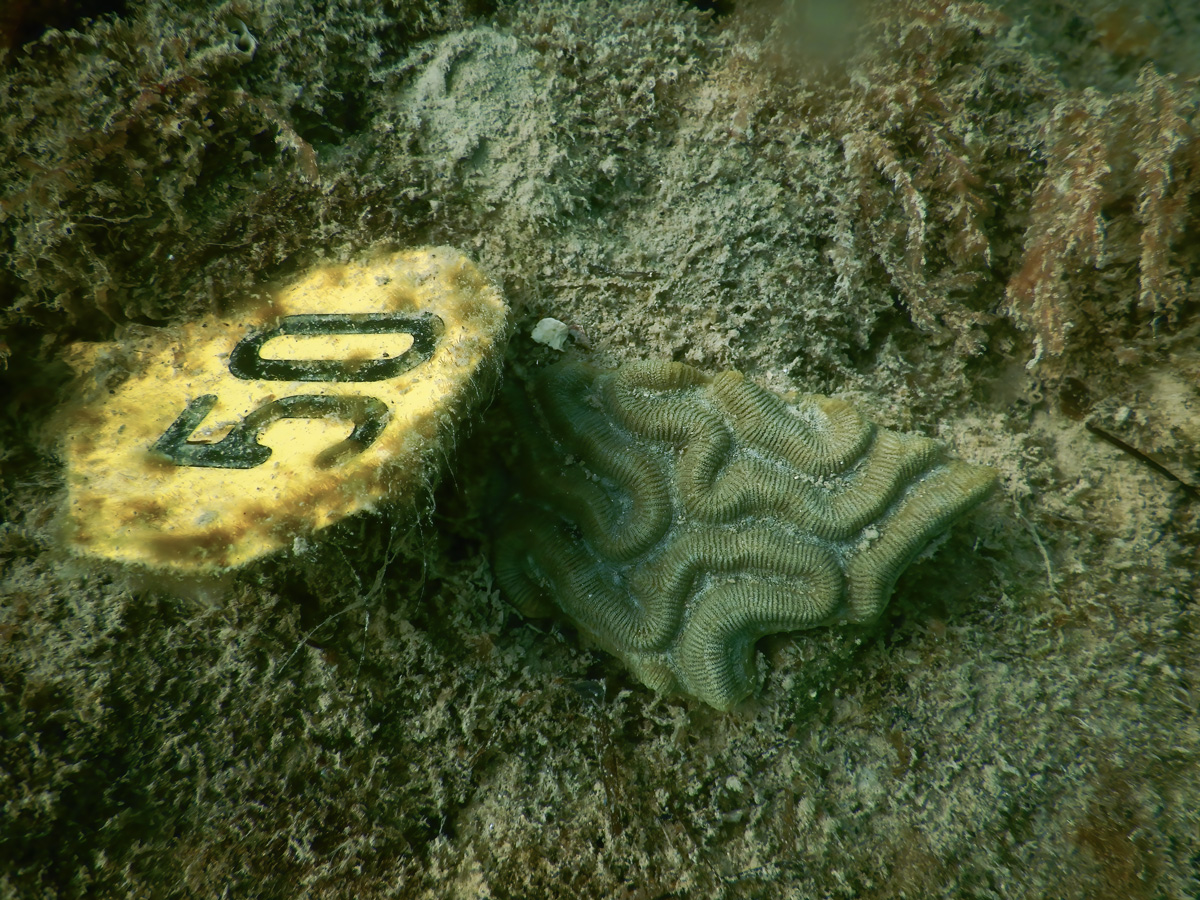 January 26, 2023
January 26, 2023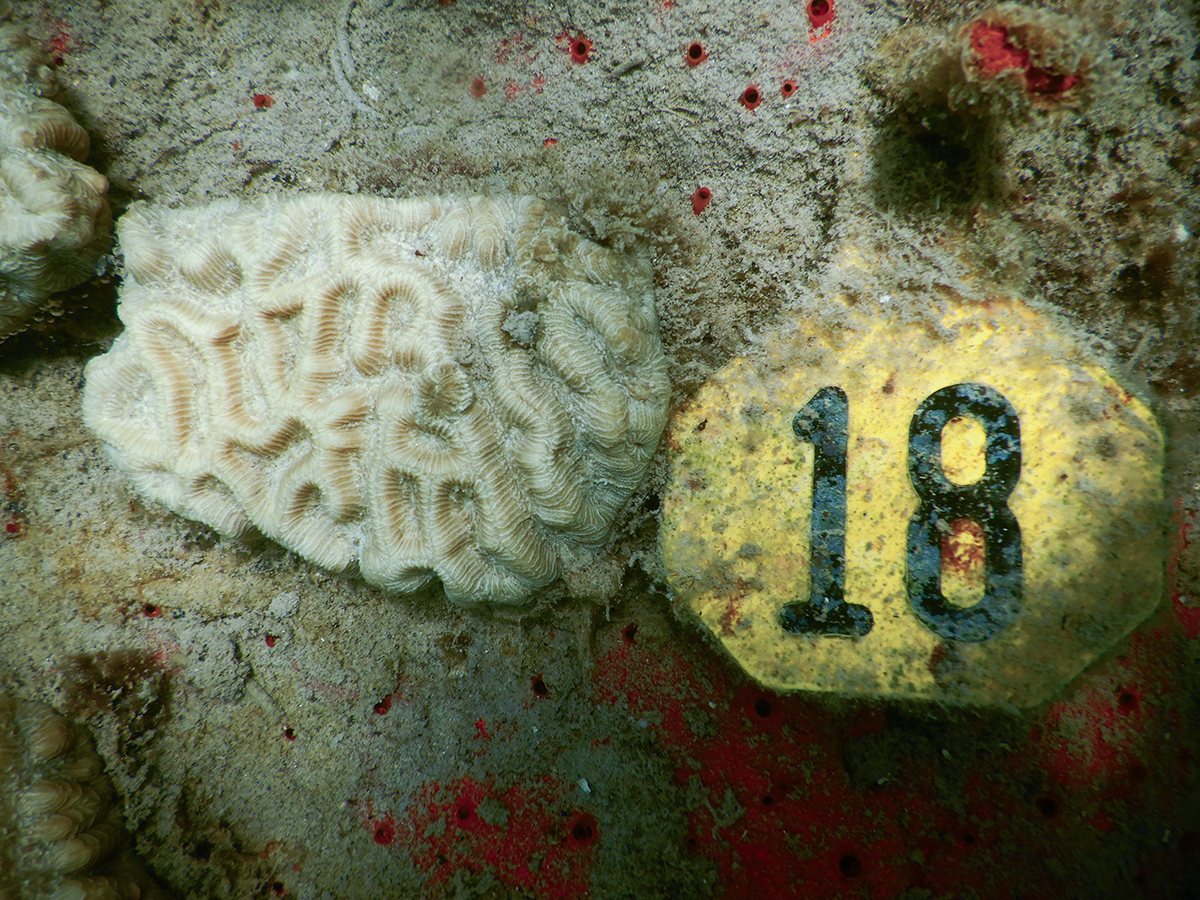 July 11, 2023
July 11, 2023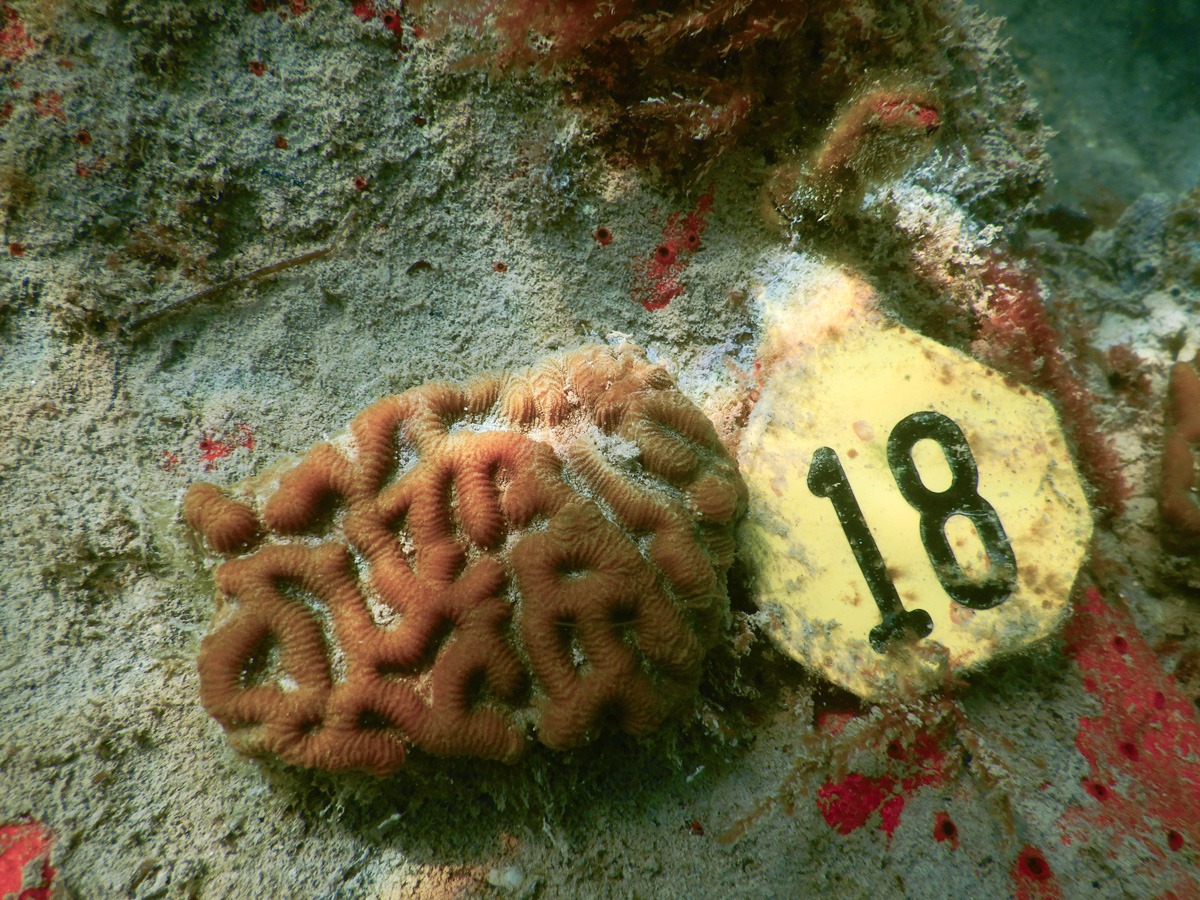 January 26, 2023
January 26, 2023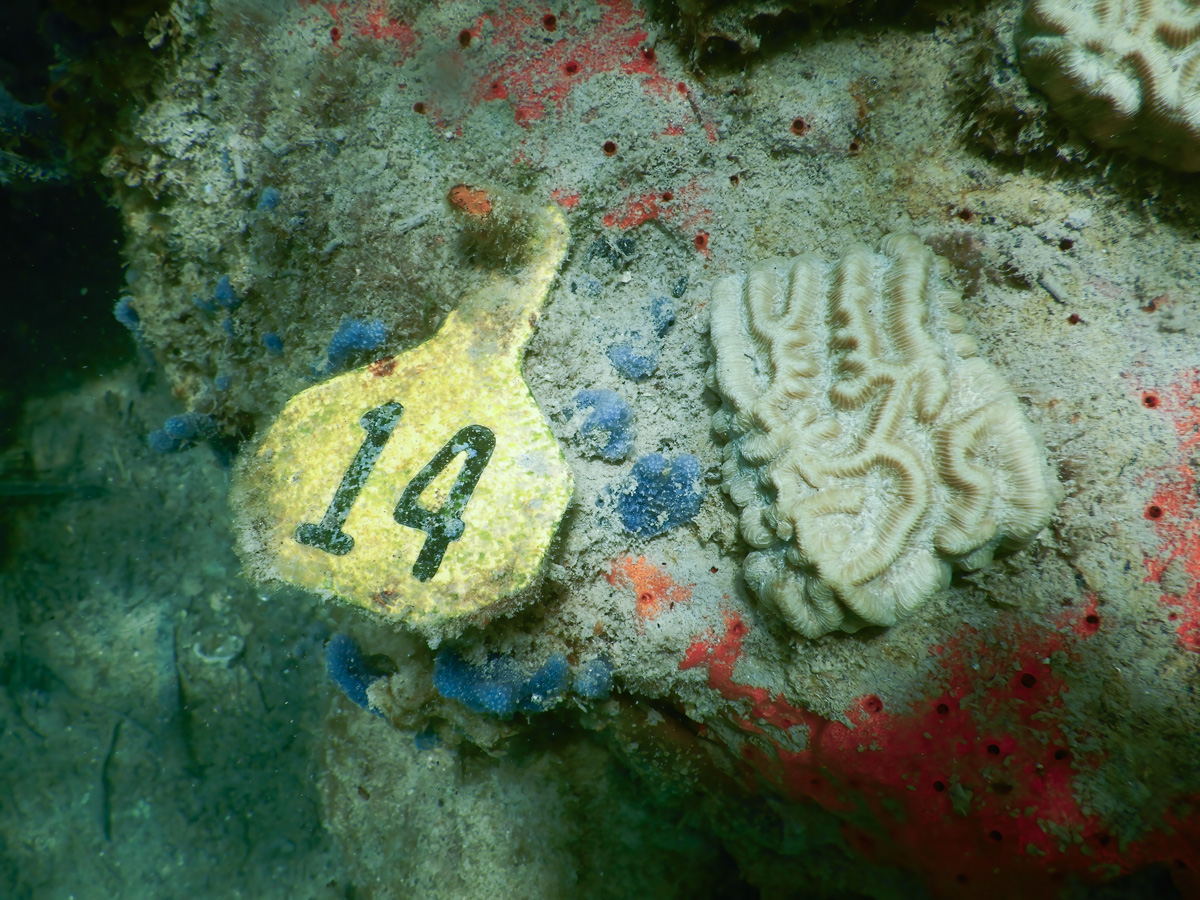 July 11, 2023
July 11, 2023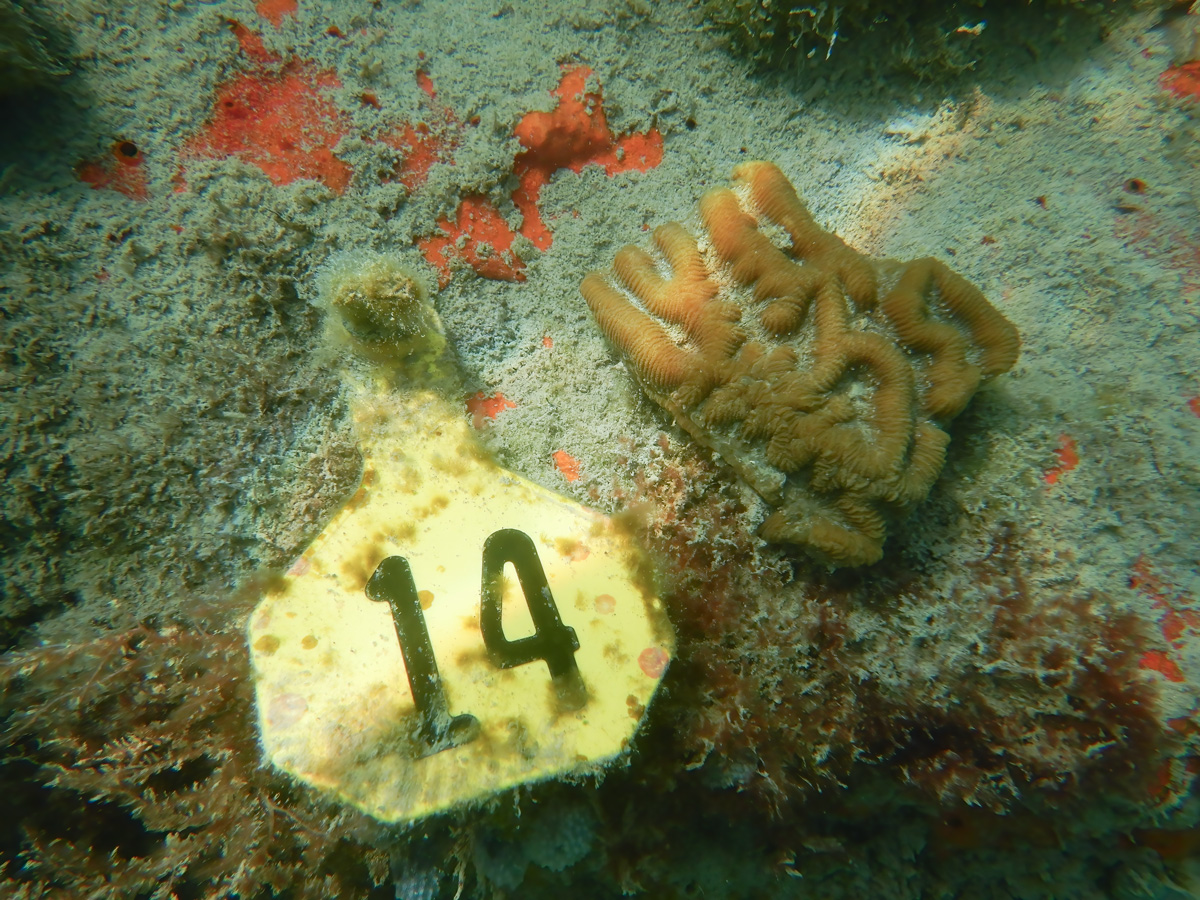 January 26, 2023
January 26, 2023Emerald Reef
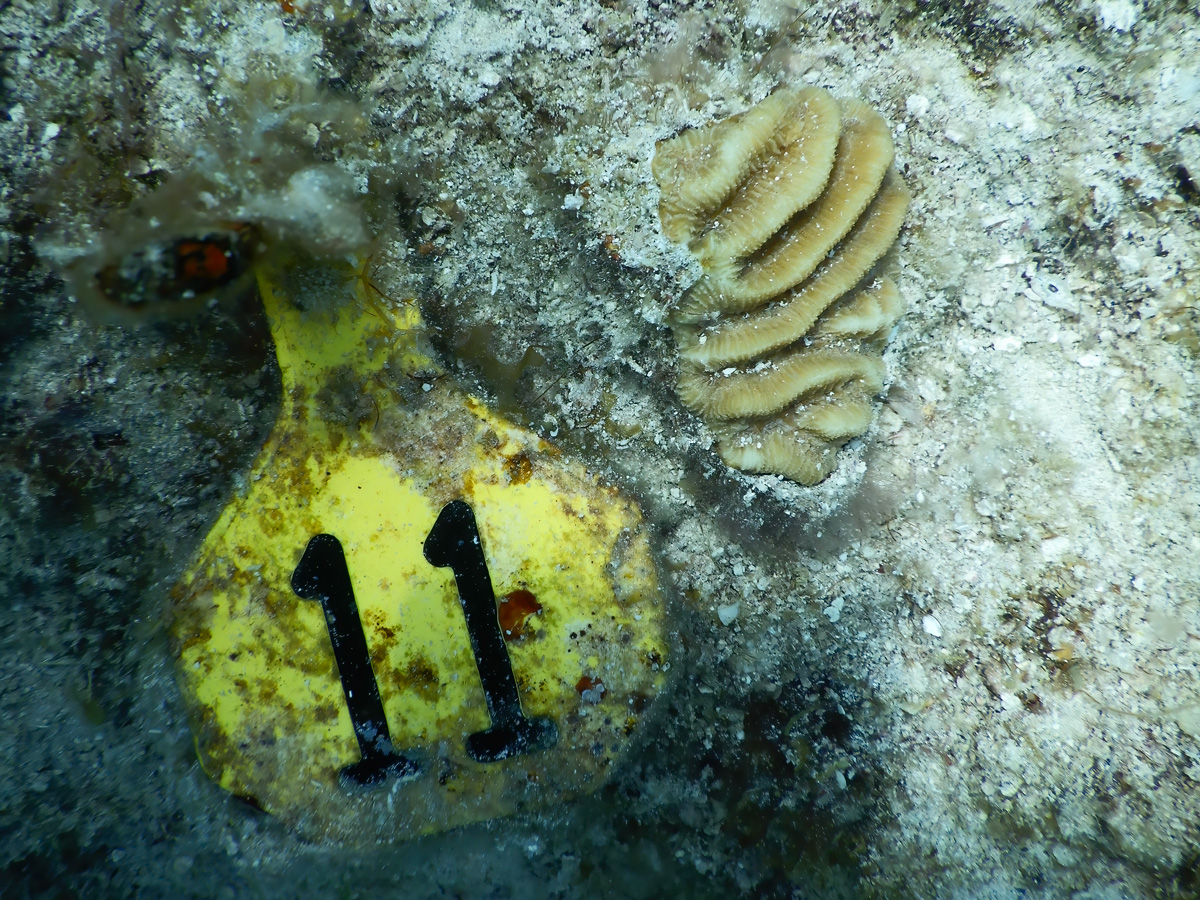 July 11th, 2023
July 11th, 2023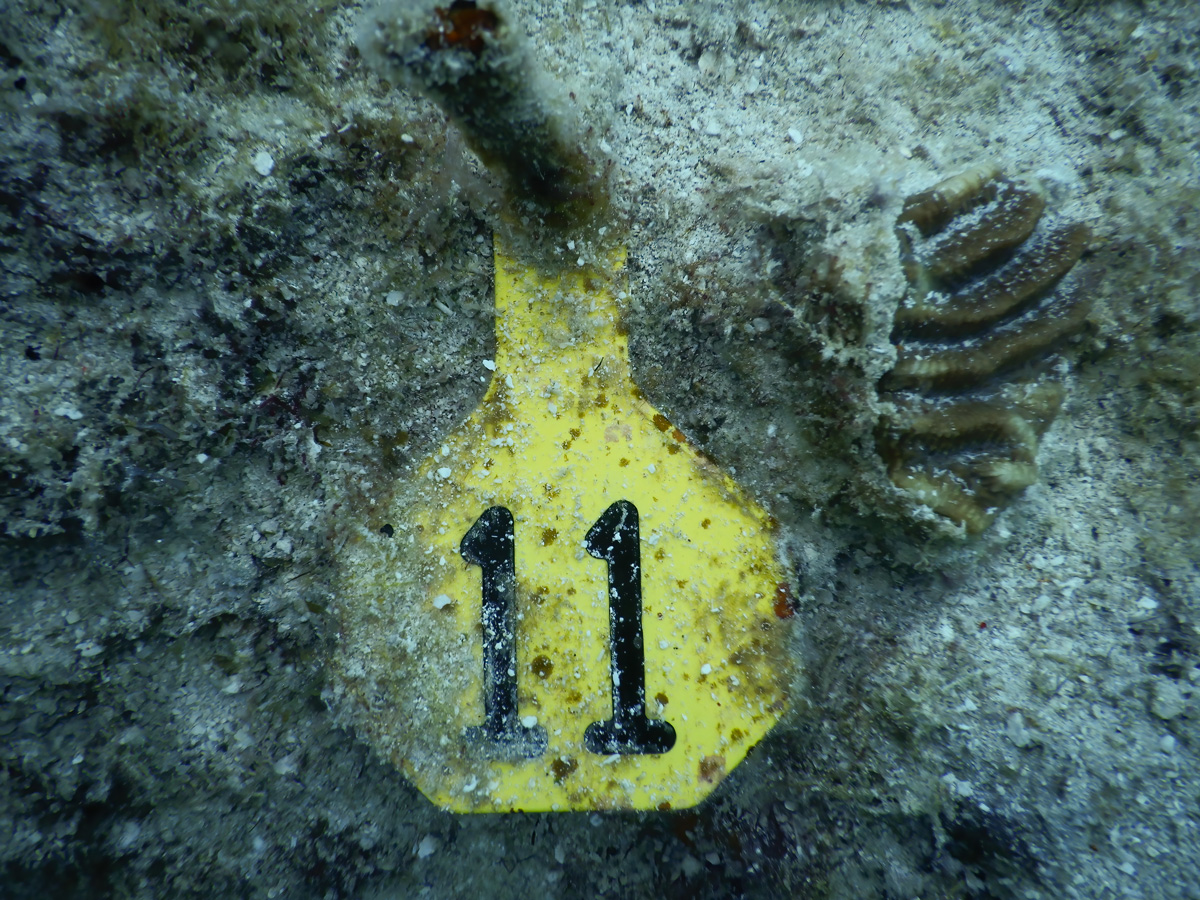 January 26, 2023
January 26, 2023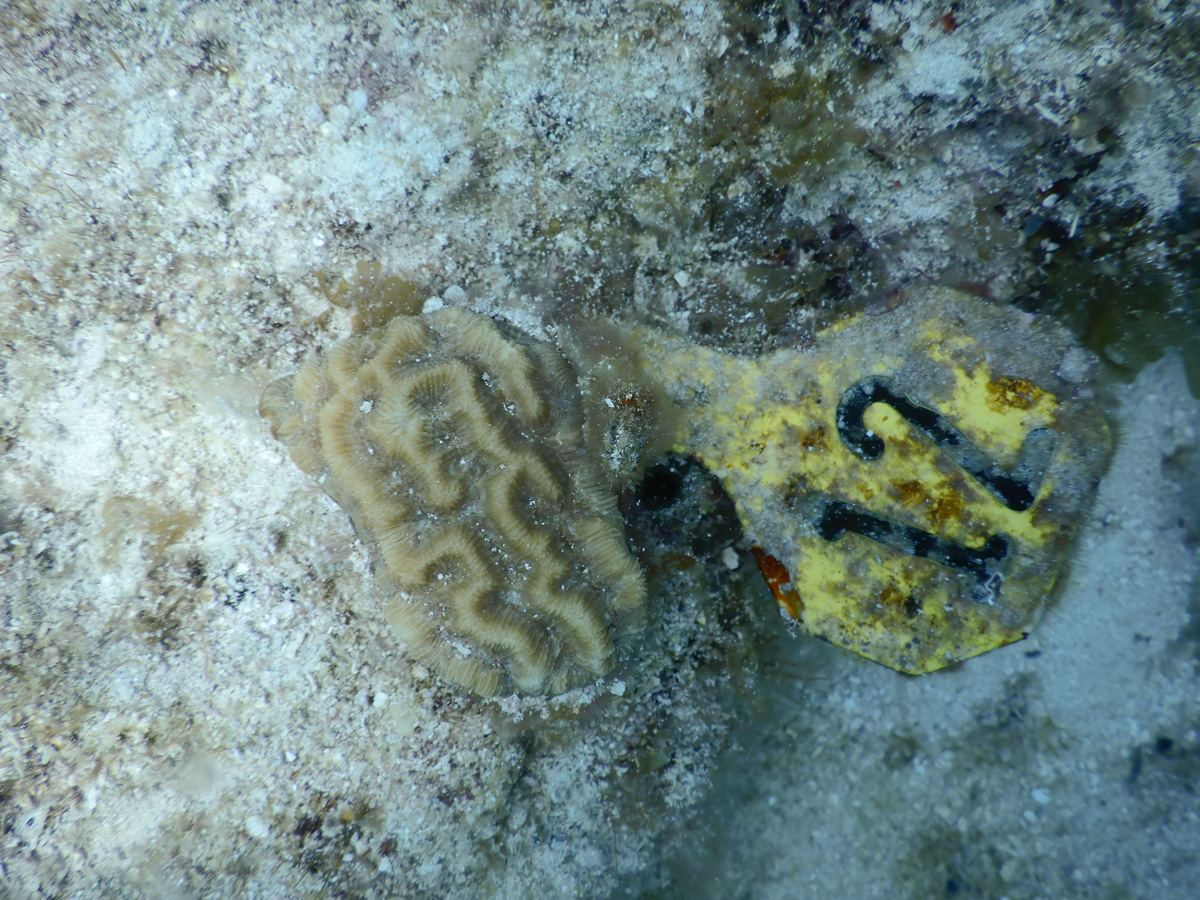 July 11th, 2023
July 11th, 2023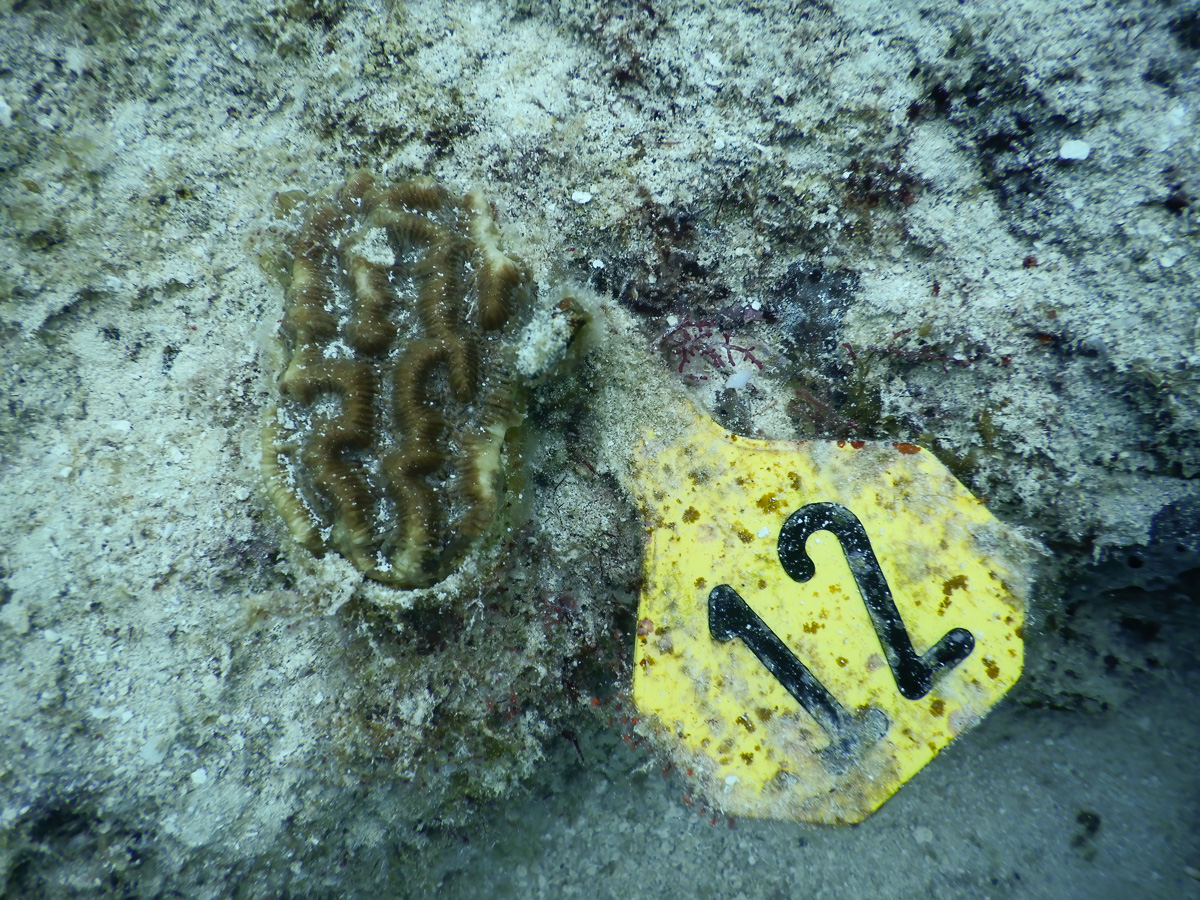 January 26, 2023
January 26, 2023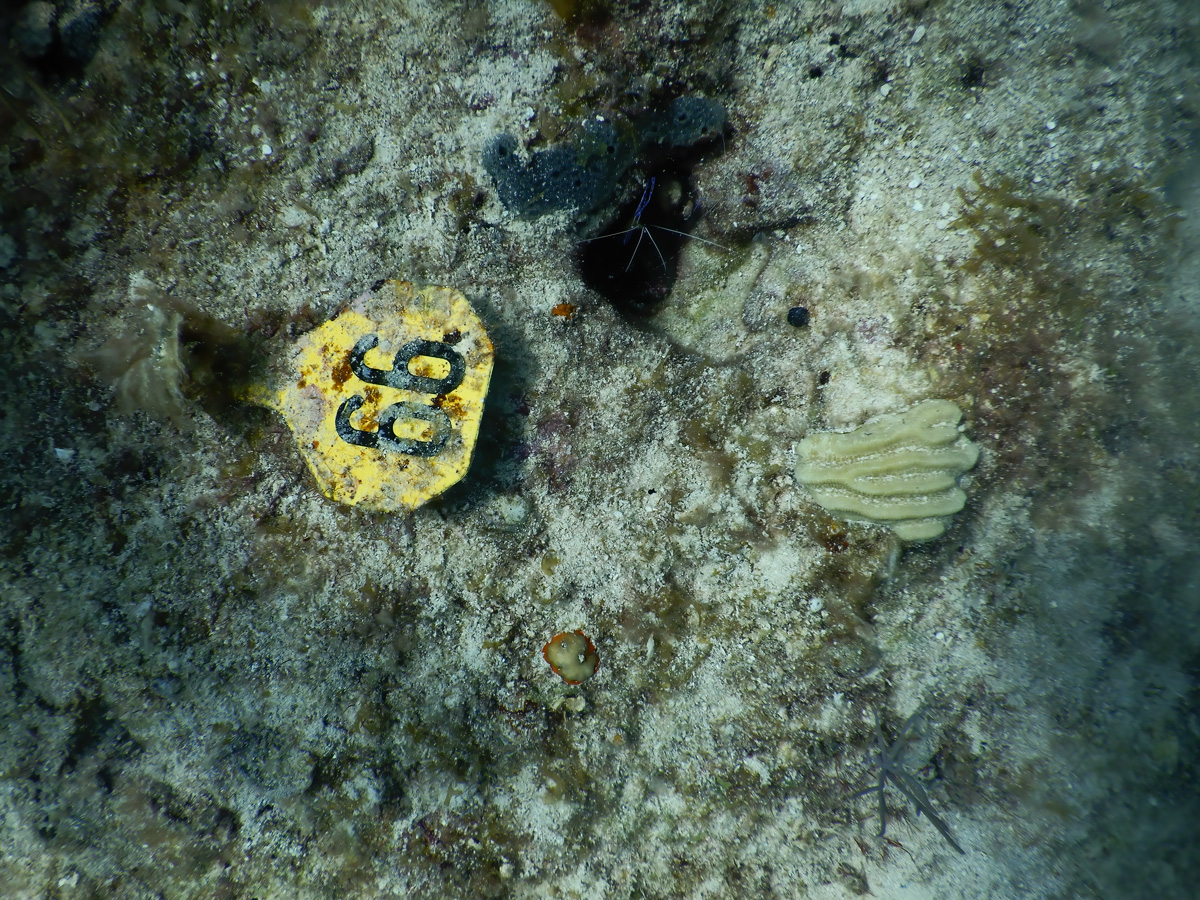 July 11, 2023
July 11, 2023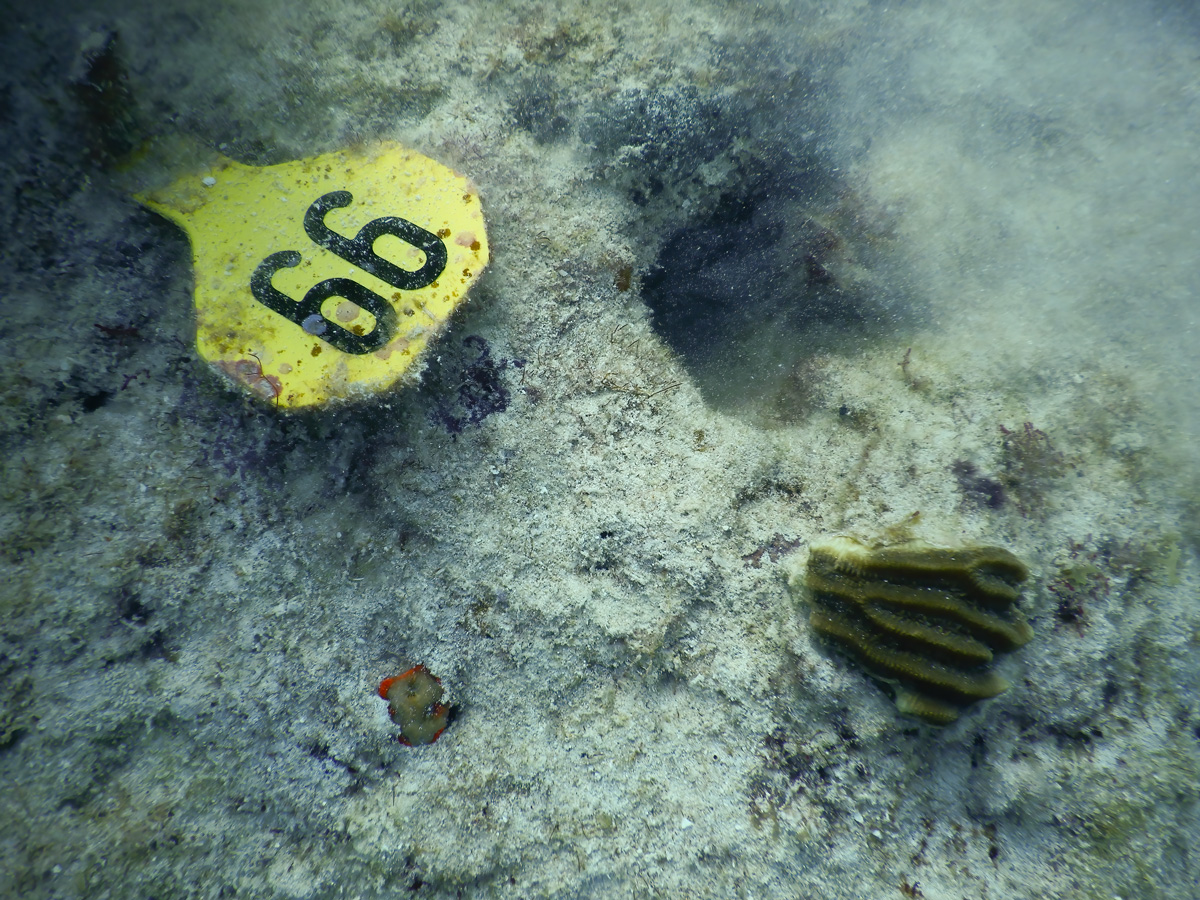 January 26, 2023
January 26, 2023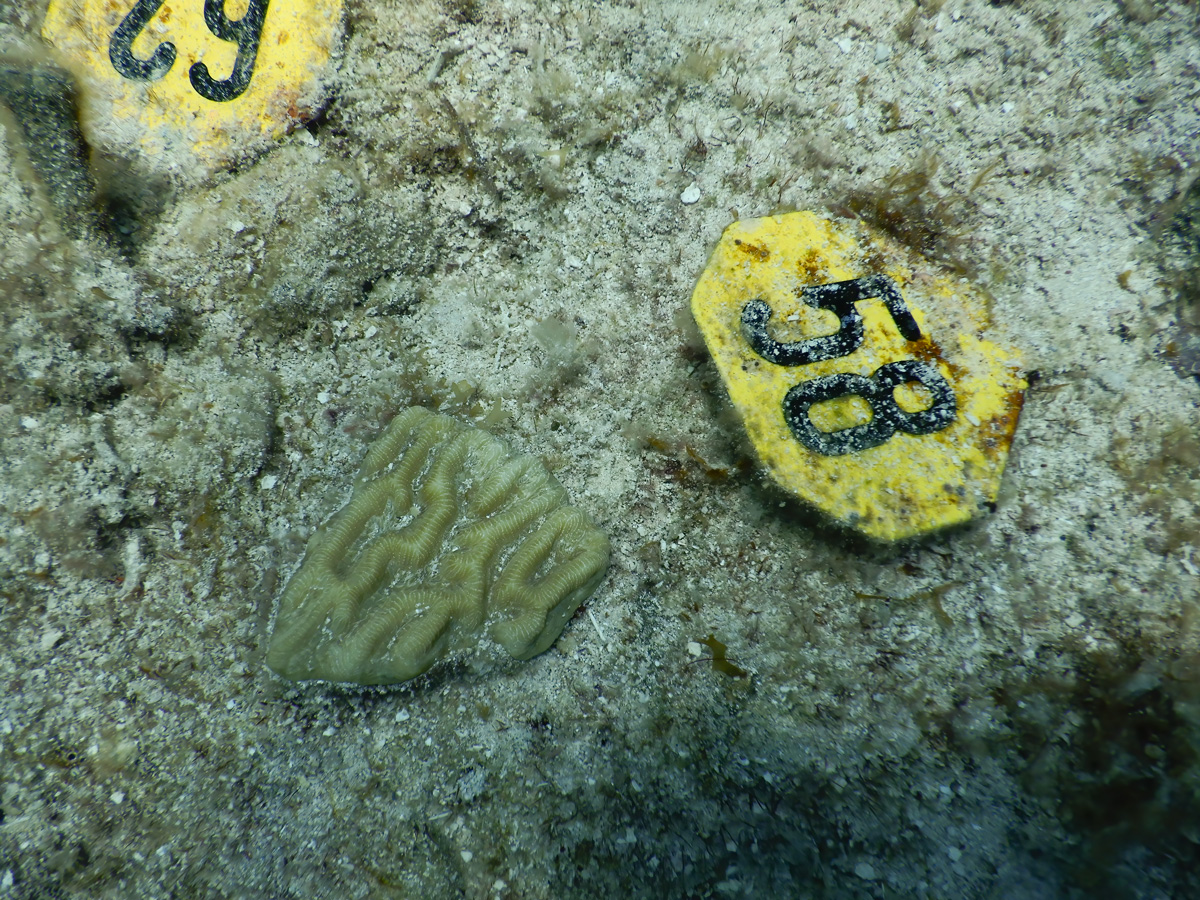 July 11th, 2023
July 11th, 2023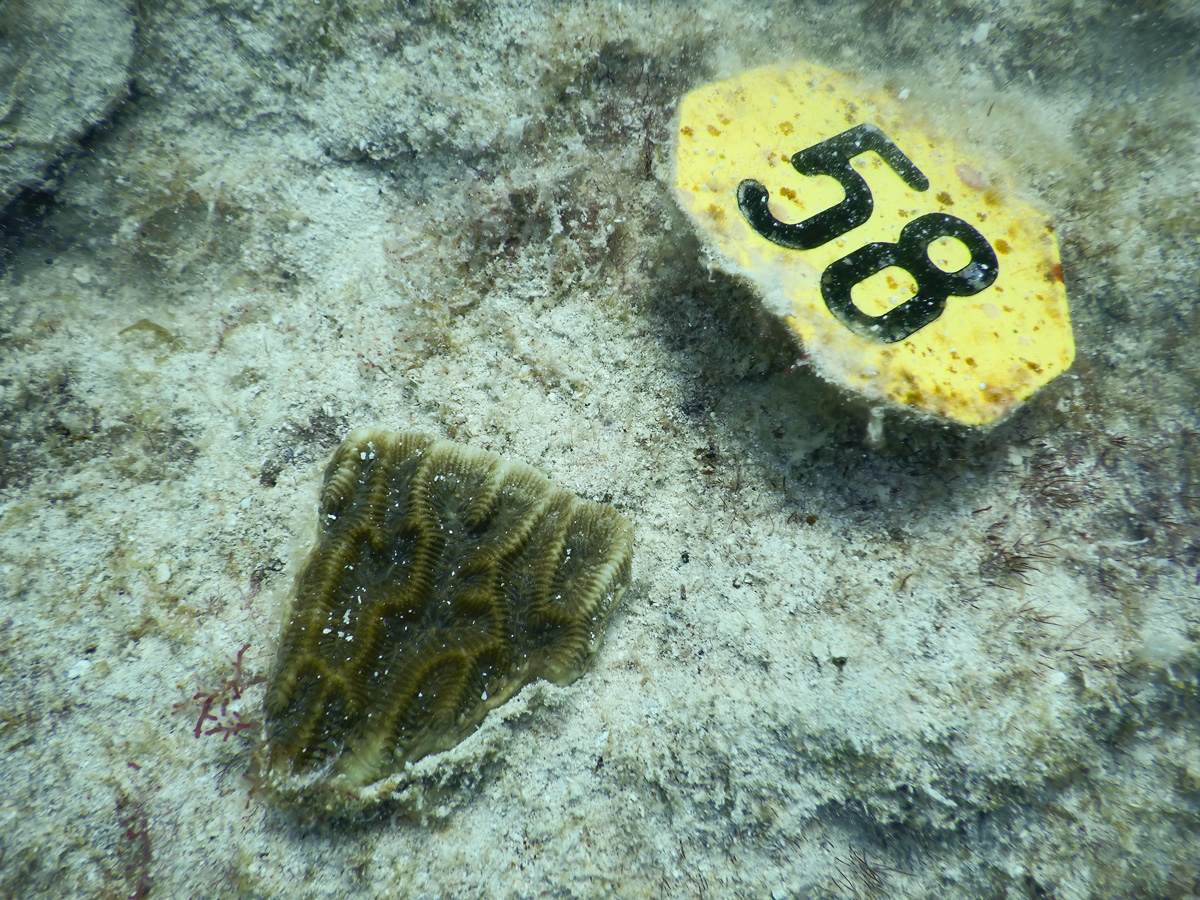 January 26, 2023
January 26, 2023

